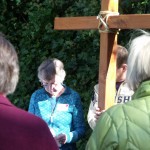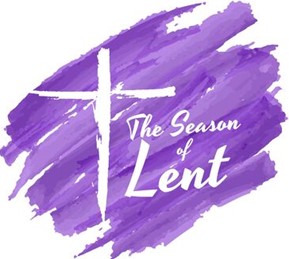Spring cleaning on St. Brigid’s Day (Feb 1) and other non-essential Catholic practices that enrich faith
By Robert Fontana

St. Brigid is one of three patron saints of Ireland along with St. Patrick and St. Columban. Her feast day, February 1, also marks the first day of Spring in Ireland. A person could go all his or her life without having fun with a spring cleaning on St. Brigid’s Day, as we outline below, and still be a very fine Christian. Obviously the same is true for another unique event for Catholics coming up on March 5, Ash Wednesday. These events have some hands-on gestures and rituals that may seem odd to the casual observer. On Ash Wednesday we receive a cross of ashes on our foreheads. On the eve of St. Brigid’s Day (February 1), we use a kerchief to literally swipe our homes clean and symbolically remove it of “sin and selfishness.” Then we tie the cloth to a tree, where the spirit of St. Brigid and the Holy Spirit, come to take the sins away. These faith-based rituals can be somber, as in receiving ashes on Ash Wednesday, or fun as on St. Brigid’s Day. What they do is help us sanctify the day, making it special by allowing our entire body to participate in the meaning of the day. The actions and gestures of these events are an outward sign, a symbolic gesture, of our belief as disciples of Jesus, yet they are not essential to discipleship.
What are the essentials of being a disciple of Jesus anyway? Here are a few that come to mind: belonging to a community of faith that follows Jesus; encountering Jesus in a personal way and making a conscious decision to follow him by living out the Beatitudes; opening one’s life to the Holy Spirit; belonging to a small group where one is personally loved and held accountable as a disciple; participating in public worship and community rites; maintaining a consistent prayer life that involves the praying/studying of Scripture; engaging one’s faith within daily life; caring for the sick, elderly, poor, and for children.

These “essentials” are the “meat and potatoes” of following Jesus but, to continue the food analogy, without much seasoning or dessert. I think that it’s the addition of the non-essentials that adds spice and fun to one’s faith. For example, the liturgical year that divides up secular time into sacred seasons of Advent/Christmas, Lent, Easter/Pentecost, and Ordinary Times, is certainly not an essential feature of being a Christian. Some deeply Christian denominations function perfectly fine without a “liturgical year.” Yet we Catholics, joined by the Orthodox and mainline Protestants, find it extremely useful to organize the year around the major themes of Jesus’ life, death, and resurrection. In doing so, we think we are better able to tell the story of Jesus’ life and integrate His message in our lives today.
The “Sign of the Cross” is another non-essential and arbitrary practice that Christians do that has helped shape an identity that is deeply Christian and Catholic. In that one action, we remind ourselves of the saving work of Jesus through his death on the cross, and of our dependence on the Trinity, Father, Son, and Holy Spirit. Can a person be a good Christian and never make the “sign of the cross”? Most certainly. Some Christians bow their heads when they begin a prayer. Catholics (and Orthodox) make the “Sign of the Cross.” It summons us to quiet ourselves, and be attentive to what God is doing in the moment, whether it be followed by the blessing of a meal or the committal of a beloved family member to the grave.
I think a relationship with Mary, the mother of Jesus, especially manifested through the practice of praying the rosary, is a non-essential practice of Christian discipleship. One could go his or her entire life without ever praying to Mary, much less saying the rosary, and still be a deeply committed follower of Jesus. St. Paul makes no mention of Jesus’ mother except in one obscure text in Galatians (4:4). Certainly Paul never prayed to Mary and never thought that what she brought to the life of a disciple was important enough to write about. Protestants, taking their cue from Paul, also do not pray to Mary (or the saints) and yet are still following Jesus as committed disciples. Mary and the rosary are non-essentials to Christian discipleship. But I believe a devotion to Mary, so deeply imbedded in Catholic culture, is a wonderful gift from God that deepens faith, hope, and love.
Of course, there are many other non-essentials such as observing the feast days of saints, praying to St. Anthony for lost items, blessing pets on the feast of St. Francis, wearing religious medals and scapulars, lighting candles as a prayer offering, fasting on Wednesdays and Fridays, and “burying the Alleluia” on Mardi Gras, the Tuesday before Ash Wednesday. None of these practices is essential to Christian discipleship and, if done these are done apart from the essentials, they have little meaning. But when these rituals are done in conjunction with being an active follower of Jesus, they have the capacity to shape a Catholic Christian identity that gives a person deeper roots and brings joy and fun to the Christian life.
So add some spice to your faith life. On St. Brigid’s Day (Feb. 1), wipe your home clean of sin, and on Mardi Gras (Mar 4) bury the Alleluia (see rituals below). Then on Ash Wednesday (Mar 5), the very next day, go to the nearest Catholic Church and get your ashes.
______________________________________
St. Brigid’s Day “Spring Cleaning” (February 1)
Prayer: Saint Brigid, daughter of Ireland and lover of Jesus, draw us by your prayers into the living flame of God’s love. Help us to clean our hearts and homes of all that is selfish and self-centered. We forgive all who have hurt us and ask God to forgive our sins as well.
Pray for us, St. Brigid, that we will be attentive to the poor and spiritually abandoned, that we will practice the Beatitudes in good times and bad, and that the warmth of God’s love will animate all that we say and do.
Activity: Each member of the home takes a kerchief or handkerchief in hand and walks through the house dusting the furniture and books, and lamps, etc. singing “Alleluia, alleluia, alleluia.”
When the house has been thoroughly dusted, all go outside and tie the kerchiefs on the branches of a tree. The myth is that, on the eve of her feast day, St. Brigid, in the grace of God and the power of the Holy Spirit, travels through the land with her prayers to remove the dust and sin, and even ailments, from our lives.
Closing Prayer: St. Brigid, come this day, to our home and hearts, come by the power of God, and be our guest. And help us, dear Brigid, to wipe away the dust of “me, my, and mine” that we might love others with a selfless heart. Amen.
Our Father…
Leave the kerchiefs and handkerchiefs on the tree for a week or until Ash Wednesday.
BURY THE ALLELUIA on “Mardi Gras (Mar 4)” the day before Ash Wednesday (Mar 5)

All Alleluia! Alleluia! Alleluia!
Leader For the 40 days of Lent the Church “buries the Alleluia” by refraining from singing this sacred word in our liturgy. We do so to remember the Lord Jesus, God’s alleluia, the Lamb of God, who took the sins of the world with him to the grave so as to rob them of their power to destroy life.
What are the sins of the world today that destroy life? Say them aloud as you write them on a sheet of paper bearing the word “Alleluia.”
[After all have done so the “Alleluia” is placed in the ground and buried with dirt in the same way that Jesus who died for the sins of the world was placed in a tomb following his death.]
All Gracious God and Father, your beloved Son Jesus suffered death to give us life. Help us during this Lenten season to deny ourselves and serve others in imitation of Him who lives with you, and the Holy Spirit, one God forever and ever. Amen!